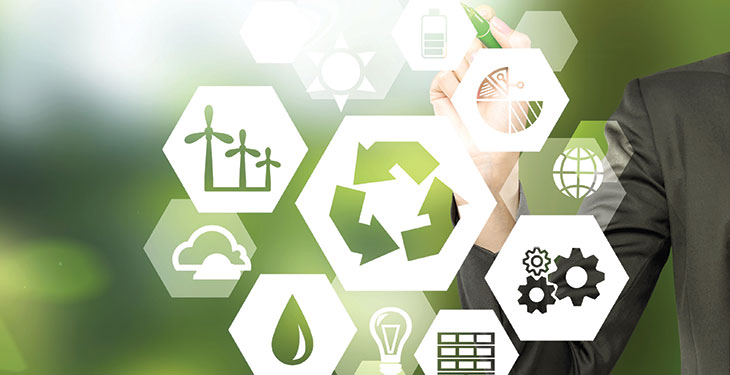
The energy policy of the last decade has been marked by the closure or reduction of many capacities to exploit primary energy resources. The rationale of these closures was linked to low profitability or non-adaptation to new environmental standards. This situation was met again and again not only in Romania but throughout Europe, making it the EU’s main objective to become the first climate-neutral continent with net-zero emissions by 2050, meaning that all emissions released will be absorbed, by natural or artificial ways, such as carbon storage technologies.
Under these conditions, the state has a dual role in the energy sector: on the one hand, it is the legislator, regulator and implementer of energy policies, and on the other hand, it is the holder and administrator of assets or significant shareholder both in the natural monopoly segments (transport of crude oil, transport and distribution of electricity and natural gas), as well as in production. The energy system must operate based on free-market mechanisms and the main role of the state is that of policymaker, regulator, a guarantor of the stability of the energy system. The decisional balance of state interests must be equalized both by solving the heavy equation of eliminating or transforming old energy-consuming giants or massively polluting energy complexes and by finding future energy solutions that are sustainable and stable for the national energy system.
In the process of profound change of the energy system toward decarbonization, energy demand and energy security are and will be interdependent. Of particular importance are the modernization and increase of power transmission capacity, as well as interconnection capacity with energy networks in the region.
A characteristic of the Romanian power generation sector is the existence of mono-fuel companies, based on a single type of primary resource, with generators experiencing different production costs and relatively balanced market shares. At the same time, the price determined based on supply and demand has a strong influence on the marginal price (of the highest-cost producer, i.e. the coal-fired producer). This is why the Energy Strategy and the National Integrated Energy and Climate Plan are geared toward diversifying the technological mix of companies so that they can become competitive and ensure energy security at the national and regional level.
According to the governing plan of the PNL-USR PLUS-UDMR coalition, the energy field proposes an ambitious project that sums up a series of measures derived from both EU policies and national development interests. I quickly list the main: ensuring energy security, completing nuclear projects, exploiting offshore natural gas in the Black Sea, expanding the power transmission network, clarifying the legal and regulatory framework that would allow investments in new renewable energy capacities, active participation in initiatives aimed at promoting the widespread use of electric batteries, power storage and CO2 capture capacity, identification and recovery of rare raw materials (e.g. lithium), and accelerating the process of digitization of power grids.
To be effective, all these measures must be applied gradually and simultaneously, because there is critical interdependence. For example, an investor in renewable energy production units needs the legislative provisions of contracts for the difference, for visibility of long-term cash flows within the regulatory framework to finance new projects and to reduce the price consumers pay for low-carbon electricity.
Already major investors such as EDP Renewables, have chosen Romania for its geostrategic position, investing more than €750 million in units with capacities of 471 MW wind and 50 MW photovoltaic. They are also the only Romanian renewable energy producers who have already installed two storage capacities, totalling 1,5 MW, to better balance the energy supplied. In Romania, renewable energy producers (members of RWEA and PATRES) account for a capacity of more than 5.000 MW.
The main obstacles to new investments in renewable energy capacities are the lack of visibility of the regulatory framework, the impossibility of ensuring the ownership of land needed to install new capacity after the new amendments to Law 17/2014 adopted at the end of 2020, high tariffs for connecting to the power grid, overload of the national power grid due to lack of investment in the transmission network and high costs of energy imbalances.
Romania’s 2030 targets, both on energy security and decarbonization, can be achieved by balanced sizing of all components – nuclear, hydro, gas and renewable. However, greater attention should be paid to the resources of the future, especially wind and solar, in terms of their natural permanence, high safety levels in use and low maintenance costs.
—————————————-
This article firstly appeared in the printed edition of Energynomics Magazine, issued in March 2021.
In order to receive the printed or electronic this issue of Energynomics Magazine, we encourage you to write us at office [at] energynomics.ro to include you in our distribution list. All previous editions are available HERE.
